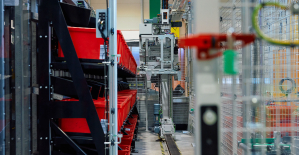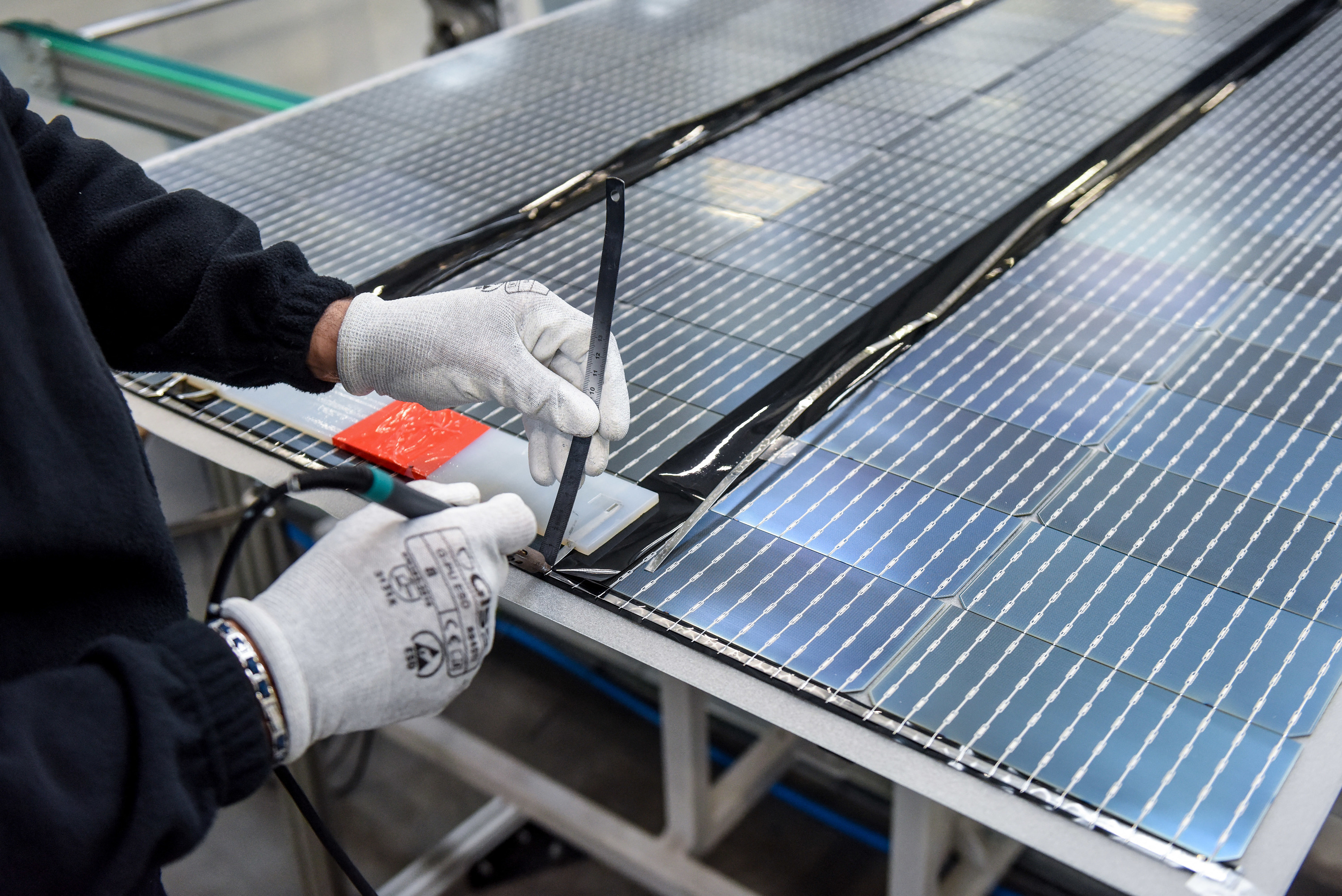No egg cell, no sperm and certainly no sex - researchers in the laboratory have created embryos even without these commonly used ingredients for the beginning of new life. Not human embryos, but mouse embryos. They created the seedlings from stem cells alone and let them grow in the lab for longer than has previously been possible. The synthetic embryos developed in much the same way as natural embryos, forming a brain, a beating heart, and structures for the nervous system and digestive tract.
"It's just incredible that we've come this far," says study leader Magdalena Zernicka-Goetz from the University of Cambridge (UK). "This has been the dream of our community for years, and has been the focus of our work for a decade - and now we've made it." The scientist and her team present their research results in the journal "Nature". A few weeks ago, scientists from Israel led by Jacob Hanna from the Weizmann Institute of Science (Rehovot) presented very similar results in the "Cell" scientific time step.
Is this work relocating the beginning of life to the laboratory? Will human embryos also be produced synthetically in the future - without the need for female and male germ cells? And are humans allowed to experiment with embryos at all, from a legal and moral point of view?
If you ask the researchers themselves, the creation of synthetic embryos is more of a means to an end than an end in itself: They want to use it to study the formation of an organism and the early stages of development in detail without having to resort to animal experiments. The goals are to gain a better understanding of diseases and developmental disorders and, one day, to be able to obtain organs for transplantation.
In fact, many details of the early development of a living being are still unknown today: How does a single cell - the fertilized egg cell - become a complete, complex, living organism? Which genes become active when, how do different cell types differentiate and how do the developing organs and tissues communicate with each other and with their environment? In mammals like humans, all of these processes take place hidden inside the protective uterus.
The experiments now presented literally bring them to light: the mouse embryos produced developed right in front of the researchers' eyes up to day 8.5 of pregnancy. That's almost halfway through a mouse's approximately 19-day gestation period, well past the time when the embryos in the mother's body would implant in the uterus. After that, the synthetic embryos stop developing. Neither egg nor sperm cells were needed to create them; the researchers created them from stem cells, the types of undifferentiated cells that can develop into different cell types.
For the experiments, the scientists combined three different types of stem cells, from which the embryo itself and the surrounding structures such as the yolk sac and placenta emerge. The resulting synthetic embryos were grown in an artificial incubator that simulated conditions in the womb. The researchers were thus able to follow the earliest developmental phase, including the early development of the organs, in detail.
"We are undoubtedly facing a new technological revolution," comments Lluis Montoliu from the National Center for Biotechnology in Madrid (Spain). The process is still very inefficient, but has enormous potential. "The discovery is reminiscent of spectacular scientific advances such as the birth of the cloned sheep Dolly, which we met in 1997, in which an embryo was reconstructed from the nucleus of a body cell. Or the first description of inducible pluripotent embryonic stem cells, iPS cells, described by Shinya Yamanaka in 2006, which earned him the 2012 Nobel Prize in Physiology or Medicine, which he shared with John Gurdon, the pioneer of amphibian cloning.”
The early embryos were "amazingly similar to normal mouse embryos," says Malte Spielmann, director of the Institute for Human Genetics at the University Medical Center Schleswig-Holstein, Kiel and Lübeck. "Among other things, all 26 cell types present in normal embryos could also be detected in the synthetic embryos, and only one cell type - parts of the placenta - was missing from the synthetic embryos."
Both of the works presented are initially proofs of concept - they show that it is possible to create synthetic embryos from stem cells and to keep them alive in the laboratory in mice until mid-pregnancy. Two central questions that immediately arise from this are: Does this also work with human stem cells and if so, what would it be useful for?
"As far as the relevance for research with human stem cells is concerned, this work is of course an important starting point," says Jesse Veenvliet from the Max Planck Institute for Molecular Cell Biology and Genetics (Dresden). "I'm sure there will be a race to produce the first human structures. This will not be easy, not least because of the crucial differences in mouse and human development and in the different biology of murine and human stem cells.” Ultimately, the question is not whether, but when the transfer to human stem cells will take place.
If it were possible to create synthetic embryos from human stem cells in a comparable way, it would enable researchers to study early human development much more closely than has been the case up to now. In this way, the causes of miscarriages could possibly also be identified, which occur exactly at the point in time when the different types of stem cells begin to communicate with each other, explains Zernicka-Goetz. “So many pregnancies end around this point, before most women realize they are pregnant. This period is the basis for everything that follows in the further course of pregnancy. If something goes wrong, the pregnancy fails."
In addition, research on synthetic embryos offers the possibility of doing without a large number of animal experiments - in basic research on embryonic development just as in applied research when it comes to assessing the risks of environmental chemicals or pharmaceutical agents. Finally, the researchers mention the possibility of one day being able to produce cells, tissues or entire organs for transplantation using synthetic embryos.
"Instead of developing a separate protocol for each cell type - for example for kidney or liver cells - maybe one day we can create a synthetic, embryo-like model and then isolate the required cells," explains Hanna. “We don't have to dictate to the developing organs how they have to develop. The embryo itself can do that best.”
Experts are now calling for the ethical implications of such research to be discussed at an early stage and appropriate rules for dealing with such cells to be drawn up in good time. The previous legal situation for research on embryos is complex. In Germany it is completely forbidden according to the protection of embryos. In many other countries, the so-called 14-day rule applies, according to which experiments on human embryos are only permitted up to this day of development. It is unclear whether the existing rules also apply to synthetic embryos obtained from human stem cells and whether these should also be subject to the 14-day rule.
"I think we should start the debate on this sooner rather than later, but at the same time it's absolutely crucial to recognize that these synthetic embryos - as the mouse model shows - no matter how embryo-like they look, have no organismic potential: they can't result in a live birth," says Veenvliet.
With regard to the situation in Germany, the central question that arises once again in view of the new experiments is whether the Embryo Protection Act is still appropriate, says the theologian and medical ethicist Peter Dabrock from the Friedrich Alexander University in Erlangen. "There are justified doubts about that." The possibility of one day obtaining organs or organ parts from synthetic embryo structures is a "high-ranking therapeutic goal", which could in principle justify corresponding research experiments from an ethical point of view.
“In my opinion, you also have to think about the beginning of life in a more complex way than has often been the case up to now. Orientation based solely on the question: “When does biological human/organic life begin?” is insufficient.” According to Dabrock, the decisive question in the moral evaluation of such experiments is, among other things, whether artificially created, organic structures should ever be implanted and brought to birth . Here he has serious concerns. These would also apply if such a life were capable of feeling pain. Because of all these questions, a public discussion about the goal and method is called for.
"Aha! Ten minutes of everyday knowledge" is WELT's knowledge podcast. Every Tuesday and Thursday we answer everyday questions from the field of science. Subscribe to the podcast on Spotify, Apple Podcasts, Deezer, Amazon Music, among others, or directly via RSS feed.

 Torrential rains in Dubai: “The event is so intense that we cannot find analogues in our databases”
Torrential rains in Dubai: “The event is so intense that we cannot find analogues in our databases” Rishi Sunak wants a tobacco-free UK
Rishi Sunak wants a tobacco-free UK In Africa, the number of millionaires will boom over the next ten years
In Africa, the number of millionaires will boom over the next ten years Iran's attack on Israel: these false, misleading images spreading on social networks
Iran's attack on Israel: these false, misleading images spreading on social networks New generation mosquito nets prove much more effective against malaria
New generation mosquito nets prove much more effective against malaria Covid-19: everything you need to know about the new vaccination campaign which is starting
Covid-19: everything you need to know about the new vaccination campaign which is starting The best laptops of the moment boast artificial intelligence
The best laptops of the moment boast artificial intelligence Amazon invests 700 million in robotizing its warehouses in Europe
Amazon invests 700 million in robotizing its warehouses in Europe Switch or signaling breakdown, operating incident or catenaries... Do you speak the language of RATP and SNCF?
Switch or signaling breakdown, operating incident or catenaries... Do you speak the language of RATP and SNCF? Transport in Île-de-France: operators are pulling out all the stops on passenger information before the Olympics
Transport in Île-de-France: operators are pulling out all the stops on passenger information before the Olympics Radio audiences: France Inter remains firmly in the lead, Europe 1 continues its rise
Radio audiences: France Inter remains firmly in the lead, Europe 1 continues its rise Russian cyberattacks pose a global “threat”, Google warns
Russian cyberattacks pose a global “threat”, Google warns A new Lennon-McCartney duo, more than 50 years after the Beatles split
A new Lennon-McCartney duo, more than 50 years after the Beatles split The Curse vs Immaculée: two thrillers but only one plot
The Curse vs Immaculée: two thrillers but only one plot Mathieu Kassovitz adapts The Beast is Dead!, the comic book about the Second World War and the Occupation by Calvo
Mathieu Kassovitz adapts The Beast is Dead!, the comic book about the Second World War and the Occupation by Calvo Goldorak 'has never lived so much as now'
Goldorak 'has never lived so much as now' Skoda Kodiaq 2024: a 'beast' plug-in hybrid SUV
Skoda Kodiaq 2024: a 'beast' plug-in hybrid SUV Tesla launches a new Model Y with 600 km of autonomy at a "more accessible price"
Tesla launches a new Model Y with 600 km of autonomy at a "more accessible price" The 10 best-selling cars in March 2024 in Spain: sales fall due to Easter
The 10 best-selling cars in March 2024 in Spain: sales fall due to Easter A private jet company buys more than 100 flying cars
A private jet company buys more than 100 flying cars This is how housing prices have changed in Spain in the last decade
This is how housing prices have changed in Spain in the last decade The home mortgage firm drops 10% in January and interest soars to 3.46%
The home mortgage firm drops 10% in January and interest soars to 3.46% The jewel of the Rocío de Nagüeles urbanization: a dream villa in Marbella
The jewel of the Rocío de Nagüeles urbanization: a dream villa in Marbella Rental prices grow by 7.3% in February: where does it go up and where does it go down?
Rental prices grow by 7.3% in February: where does it go up and where does it go down? Europeans: the schedule of debates to follow between now and June 9
Europeans: the schedule of debates to follow between now and June 9 Europeans: “In France, there is a left and there is a right,” assures Bellamy
Europeans: “In France, there is a left and there is a right,” assures Bellamy During the night of the economy, the right points out the budgetary flaws of the macronie
During the night of the economy, the right points out the budgetary flaws of the macronie Europeans: Glucksmann denounces “Emmanuel Macron’s failure” in the face of Bardella’s success
Europeans: Glucksmann denounces “Emmanuel Macron’s failure” in the face of Bardella’s success These French cities that will boycott the World Cup in Qatar
These French cities that will boycott the World Cup in Qatar Champions League: semi-final schedule revealed
Champions League: semi-final schedule revealed Serie A: AS Roma extends Daniele De Rossi
Serie A: AS Roma extends Daniele De Rossi Ligue 1: hard blow for Monaco with Golovin’s premature end to the season
Ligue 1: hard blow for Monaco with Golovin’s premature end to the season Paris 2024 Olympics: two French people deprived of the Olympic Games because of a calculation error by the international federation?
Paris 2024 Olympics: two French people deprived of the Olympic Games because of a calculation error by the international federation?


















